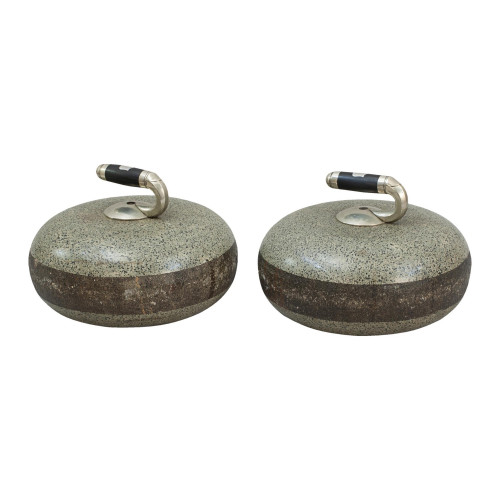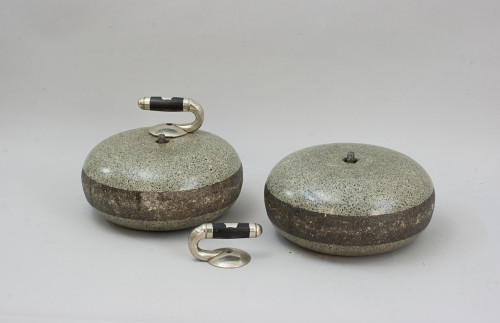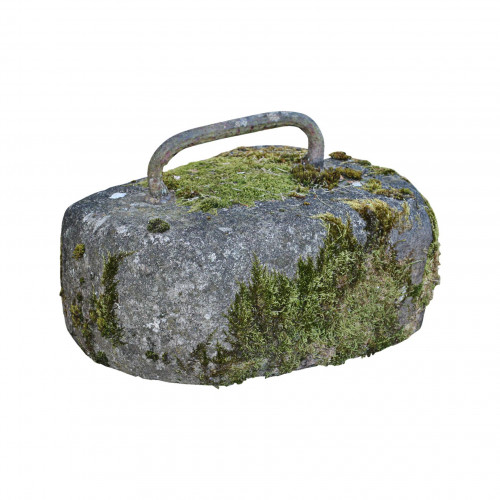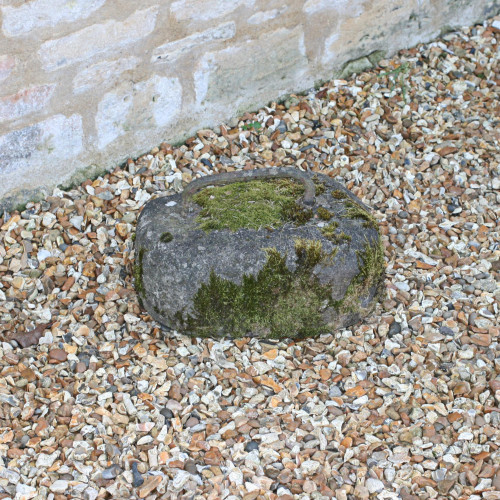- Home
- Alpine, Wintersport & Mountaineering
- General
- Early Single-soled Curling Stone
Early Single-soled Curling Stone
Early Single-soled Curling Stone
29821
Antique Granite Curling Stone.
A late 19th century single-soled curling stone with a brass (gun metal) and wood handle. The handle is fixed to a bar that is set into the top of the stone.
The stone is 25 cm in diameter and 14 cm high with out the handle, circumference 79½ cm.
A good decorative collectors piece, and a curling stone makes for a very good door stop.
The exact origins of curling are unclear but it is known to have a long history in Scotland, and it was through Scottish immigrants that the game of curling spread to other parts of the world. Early curling was an out door sport that was played on frozen lochs and ponds. Because of the unpredictable weather artificial curling rinks were being made to make a little frost go a long way. Concrete rinks were flooded with small amounts of water so they would freeze solid after a night of frost, thus having a rink to play on when the frozen lochs or ponds were unsafe. The first Curling Clubs were formed in Scotland as were the first rules to standardise curling and its equipment. The Grand Caledonian Curling Club was founded in Edinburgh in 1838, they formally adopted these new rules and became the sport's governing body. They heavily supported the use of round granite stones and rather than eight players each throwing a single stone it changed to a team of four players using two matched stones each. Four years later, in 1843, Her Majesty Queen Victoria so fascinated by the game demonstrated on the polished floor of the ballroom of Scone Palace near Perth she granted the Club the title of Royal Caledonian Curling Club. Curling was firmly established in Canada by the Scots with The Royal Montreal Curling Club being established in 1807, the oldest sports club still active in North America.
Dimensions:
1850-1899
C. 1860's
Granite
United Kingdom
good stone, handle is worn with use and age.
Thank you for your enquiry.
We will get back to you soon.
Please create wishlist to add this item to
RELATED ITEMS

































